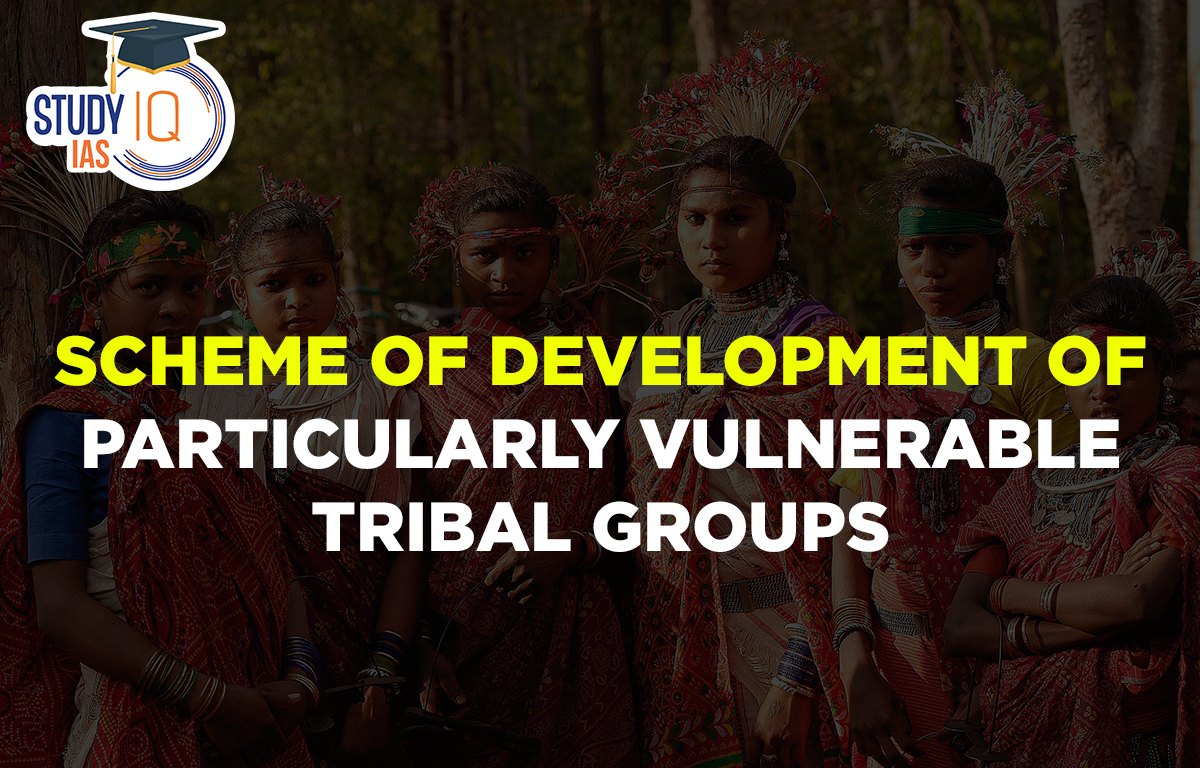Table of Contents
Scheme of Development of Particularly Vulnerable Tribal Groups is going to implemented by Ministry of Tribal Affairs a dedicated Centrally Sponsored Scheme (CSS).
Particularly Vulnerable Tribal Groups (PVTGs)
Primitive Tribal Groups (PTGs) is a separate category among tribals, who are less developed compared to other tribal groups.
In 1975, the Government of India initiated to identify the most vulnerable tribal groups as a separate category called PVTGs.
Currently, there are 75 groups of most vulnerable sections amongst the tribals who are classified as PVTGs.
They are spread over 18 States and the Union Territory of Andaman & Nicobar Islands.
Identification Criteria of PVTGs
- Pre-agricultural level of technology
- Low level of literacy
- Economic backwardness
- A declining or stagnant population.
Characteristics of PVTGs: They are mostly homogenous, with a small population, relatively physically isolated, social institutes cast in a simple mould, absence of written language, relatively simple technology and a slower rate of change etc.
- PVTG population has been steadily rising since the 1960s: It increased from 0.77 million in 1961 to 1.4 million in 1971, some 2.26 million in 1981, then 2.41 million in 1991 and 2.76 million in 2001.
- PVTGs are scattered in different geographical areas of the country.
- There are 12 PVTGs having a population above 50,000 and the remaining groups have a population of 1000 or less.
- The PVTG of Sahariyas has the highest population of 4,50,217, while the PVTGs of Sentinelets and Andamanese has a very small population of 39 and 43, respectively.

Scheme of Development of Particularly Vulnerable Tribal Groups in India
Aim: Planning for the socio-economic development of the PVTG tribal communities in a comprehensive manner while retaining their culture and heritage by adopting habitat development approach to fill in the critical gaps in development.
Funds are released as a measure of gap filling interventions in accordance with the Conservation-Cum-Development (CCD) Plans prepared by the State Governments in diverse sectors:
- Education
- Housing
- Agricultural development
- Animal husbandry
- Strengthening of infrastructure through construction of community assets
- Installation of non-conventional sources of energy for lighting purpose
- Social security
- Any other innovative activity meant for the comprehensive development of PVTGs
To Ensure Effectiveness of the Scheme:
- State Governments have been given the flexibility of utilizing the funds using the gaps identified through Base Line Surveys.
- Emphasis on Micro plan approach through formulation of Conservation cum Development (CCD) plans for ensuring conservation of culture and traditional practices of PVTGs.
- Physical progress of works approved under the scheme is monitored regularly.
- Impact assessment of the scheme is undertaken by the Ministry and also by NITI Aayog.
Other PVTG Development Schemes:
- Eklavya Model Residential Schools (EMRS)
- Ministry of Tribal Affairs is implementing it, to provide quality education to Scheduled Tribes (ST) students including PVTG students (Class 6th to 12th) in remote areas to enable them to access the best opportunities in education and to bring them at par with the general population.
- 5% seat in each of the EMRSs is reserved for PVTG students only.
- Article 275(1) of Constitution
- Grants-in-aid is provided under Article 275(1) of Constitution of India to States.
- Funds are utilised for the socio economic development of ITDA, MADA, Clusters and for PVTGs


 Daily Quiz 11 July 2025
Daily Quiz 11 July 2025
 Operation Baam: Baloch Separatist Group ...
Operation Baam: Baloch Separatist Group ...
 Article 326 and Electoral Roll Revision ...
Article 326 and Electoral Roll Revision ...





















